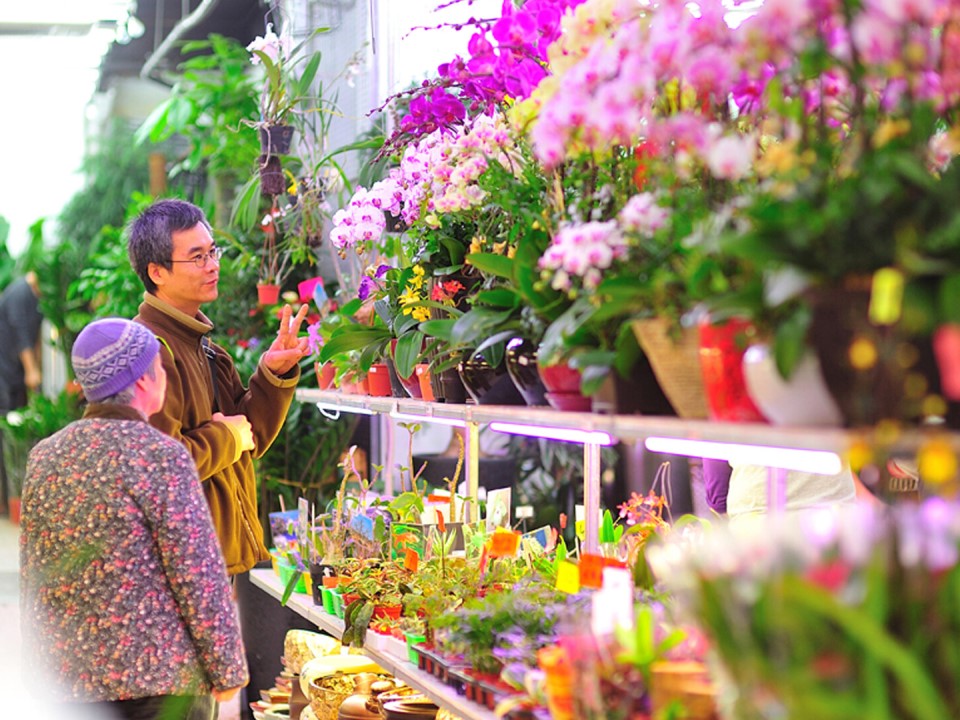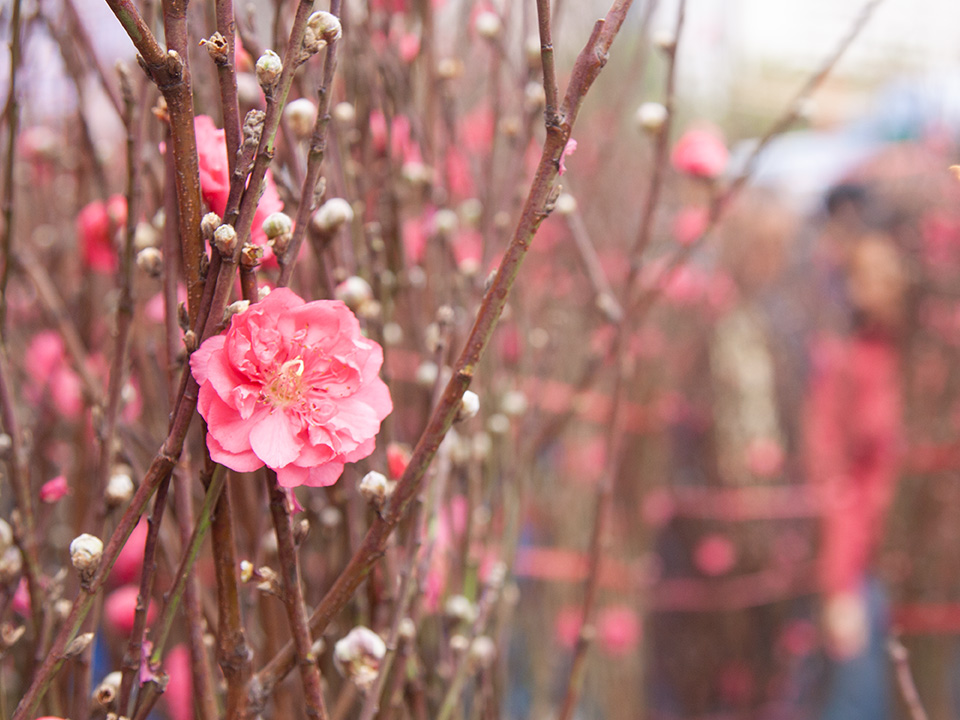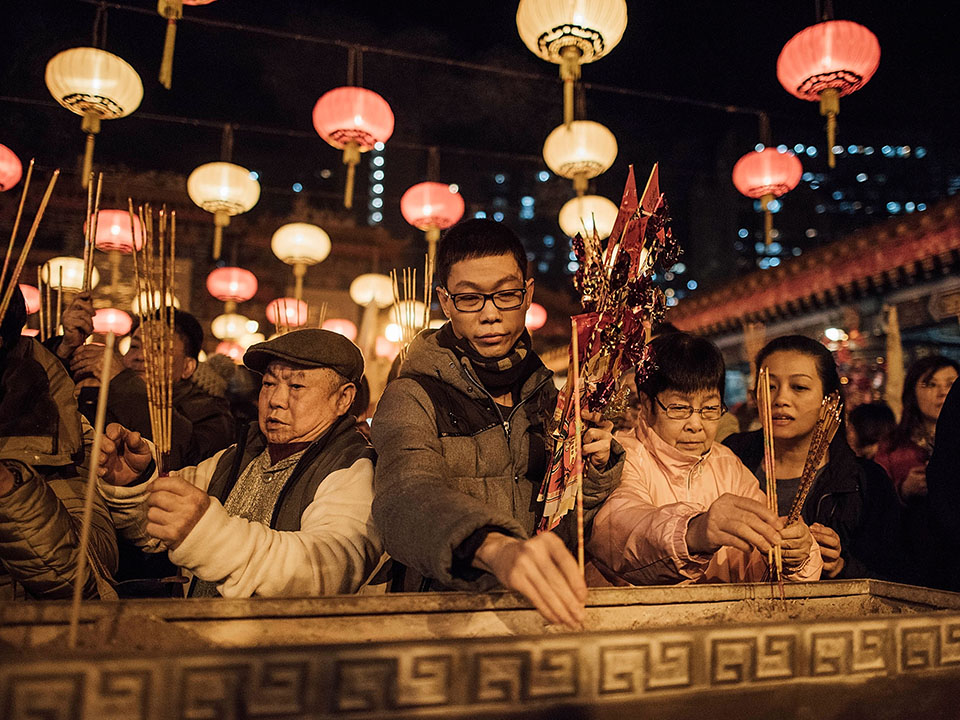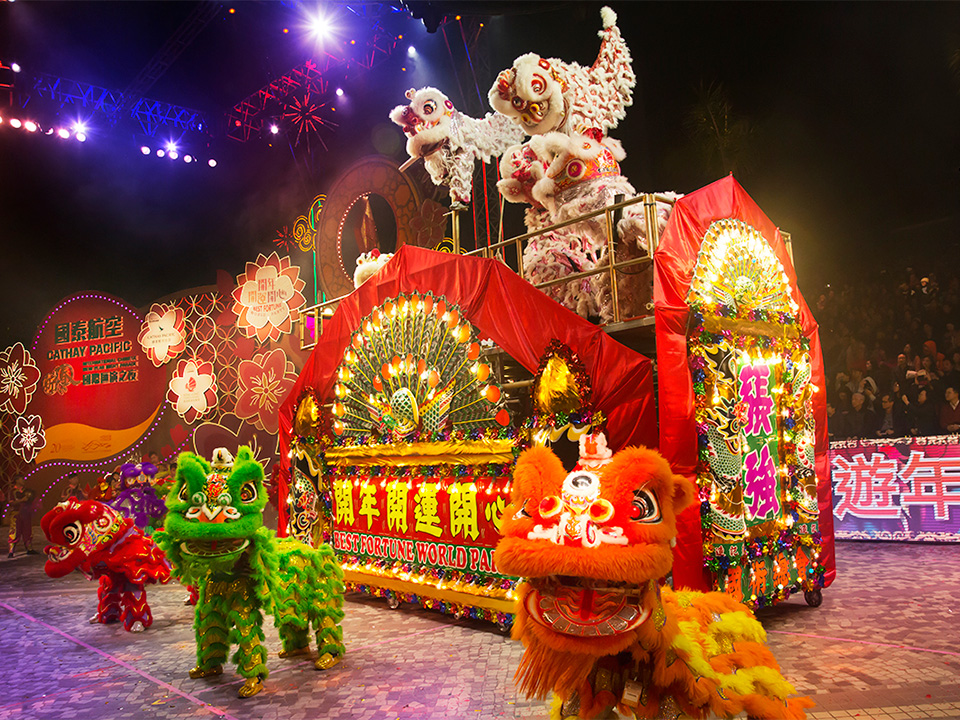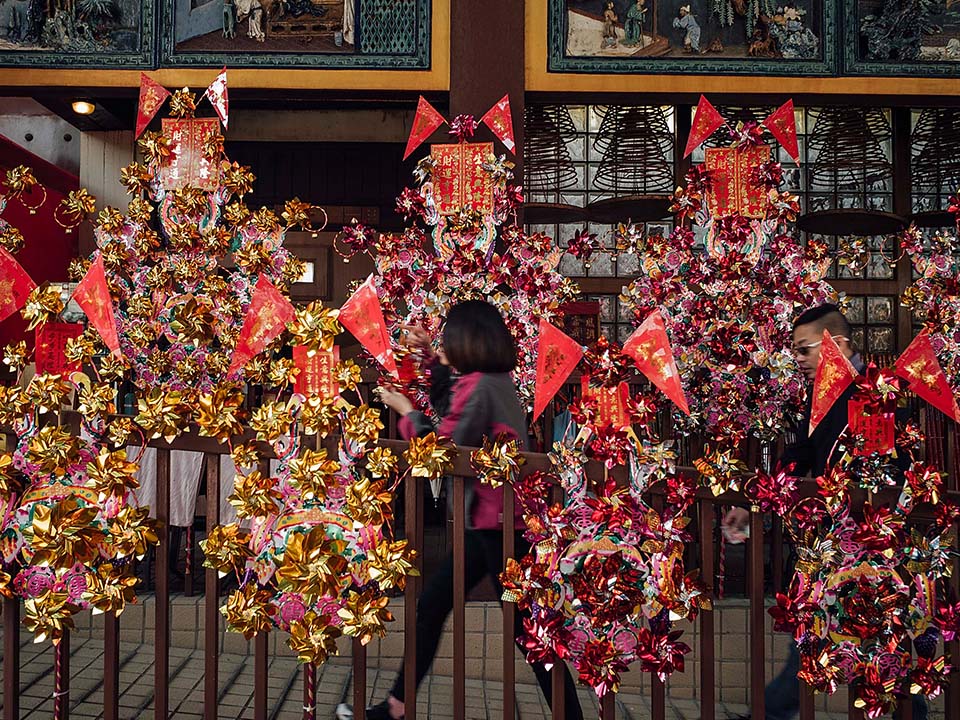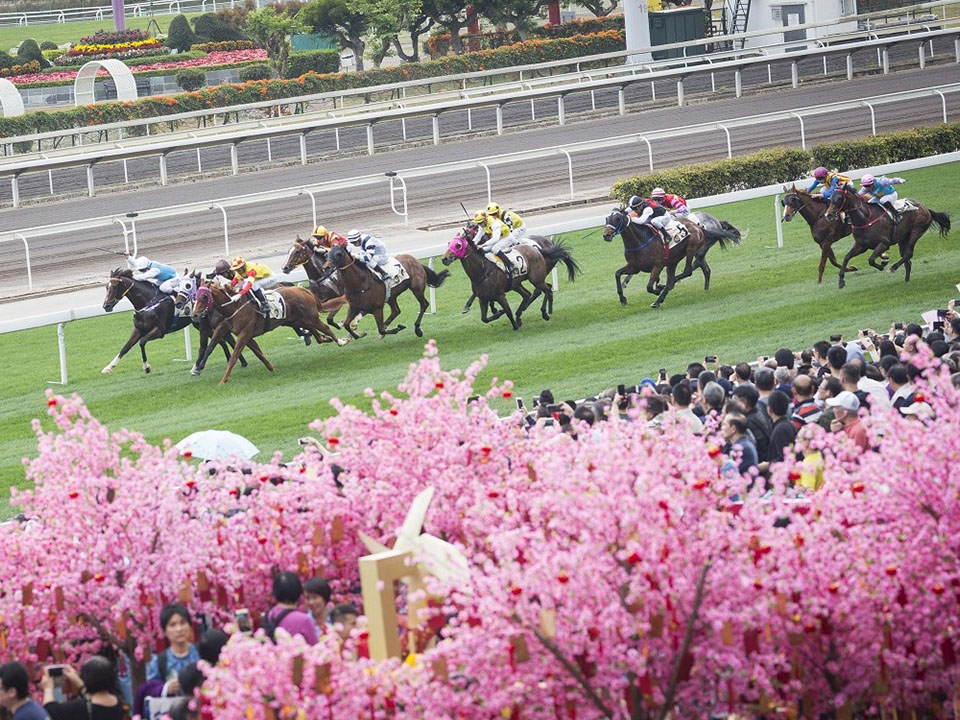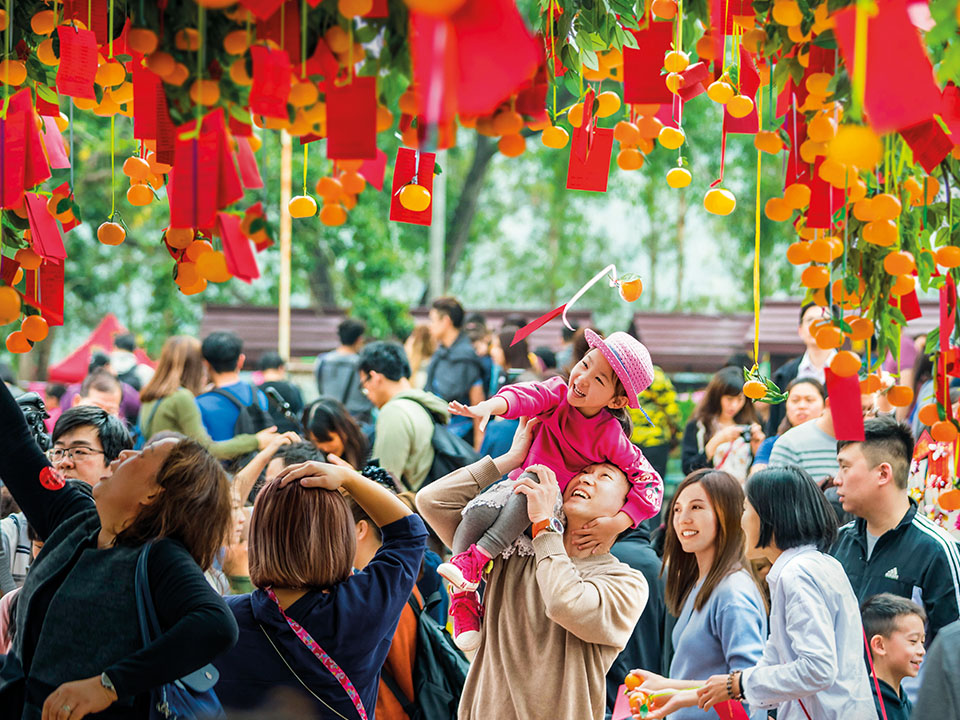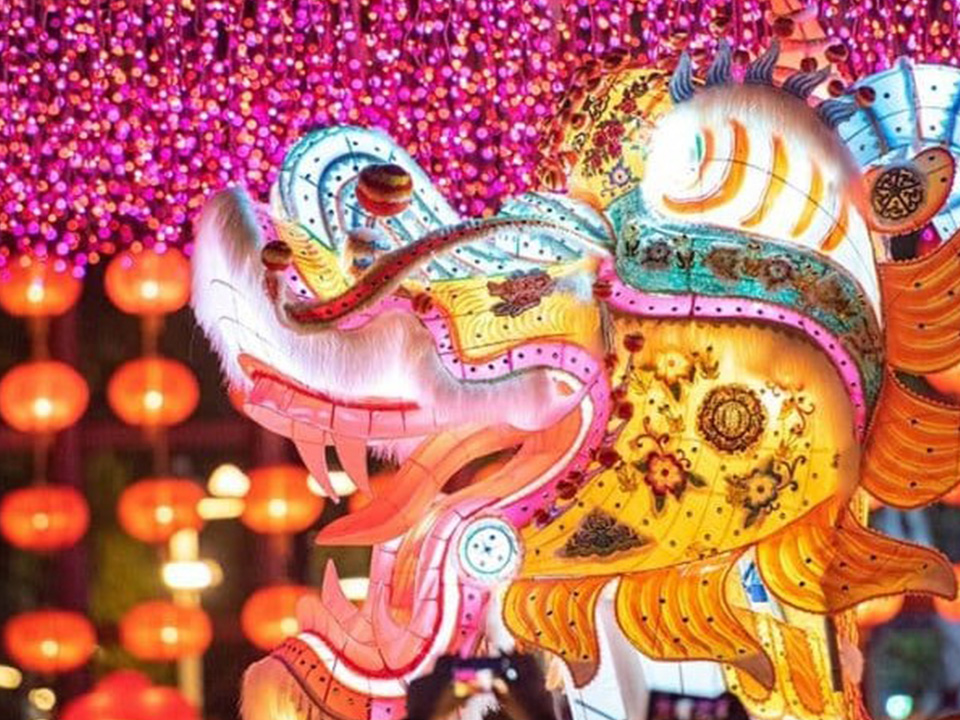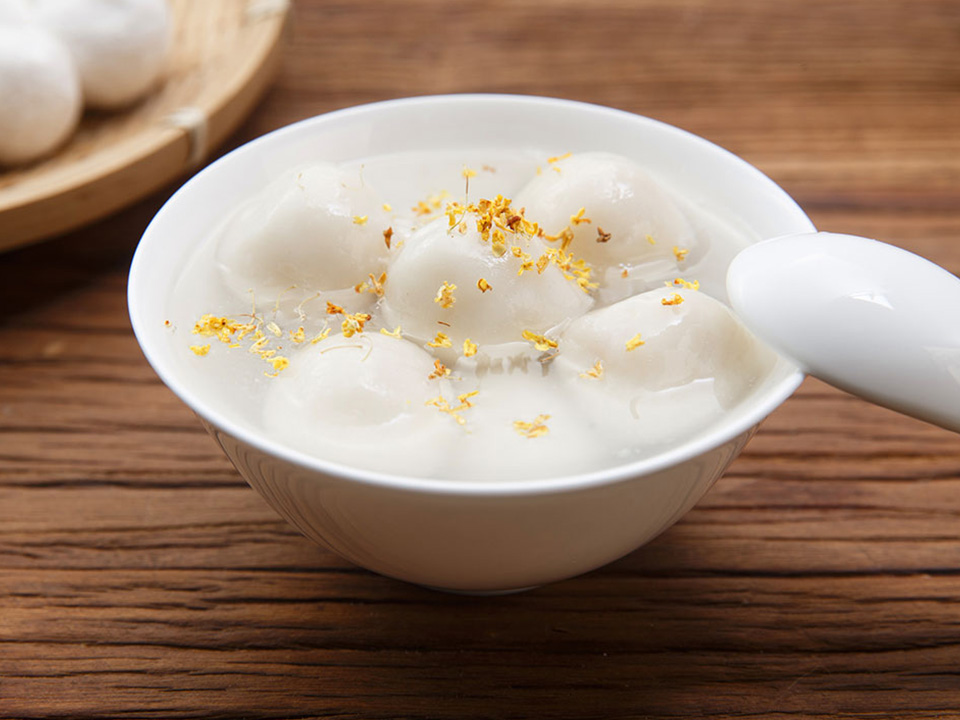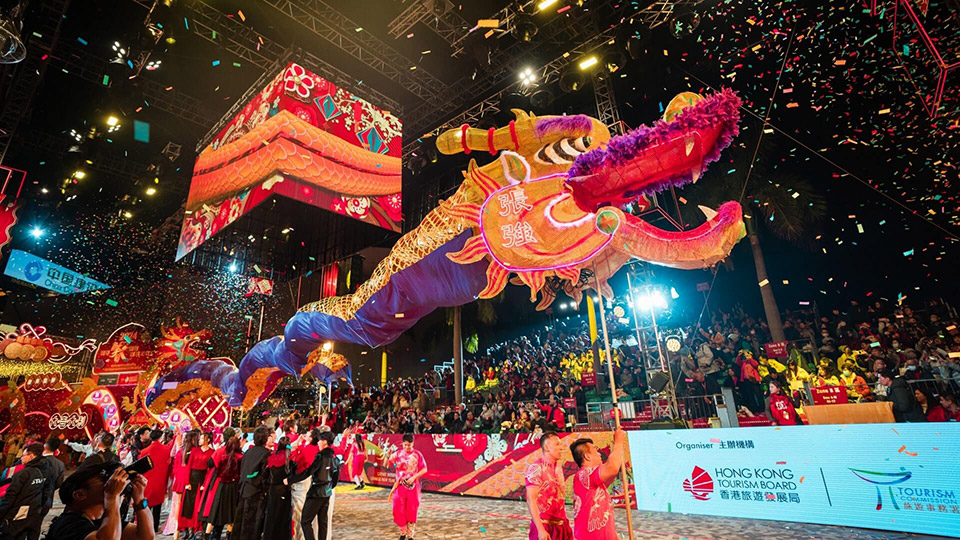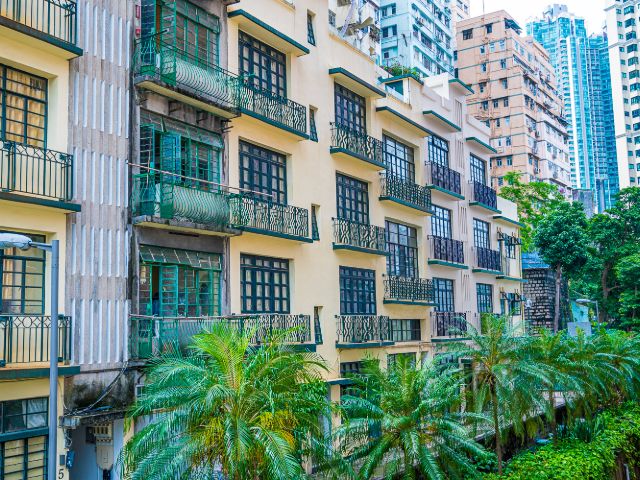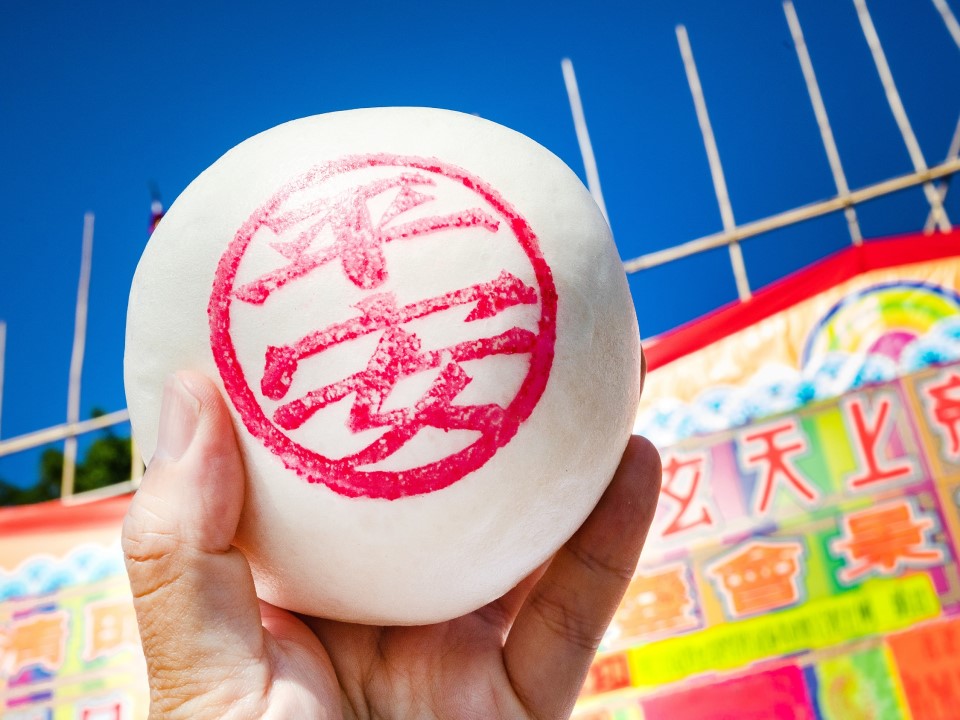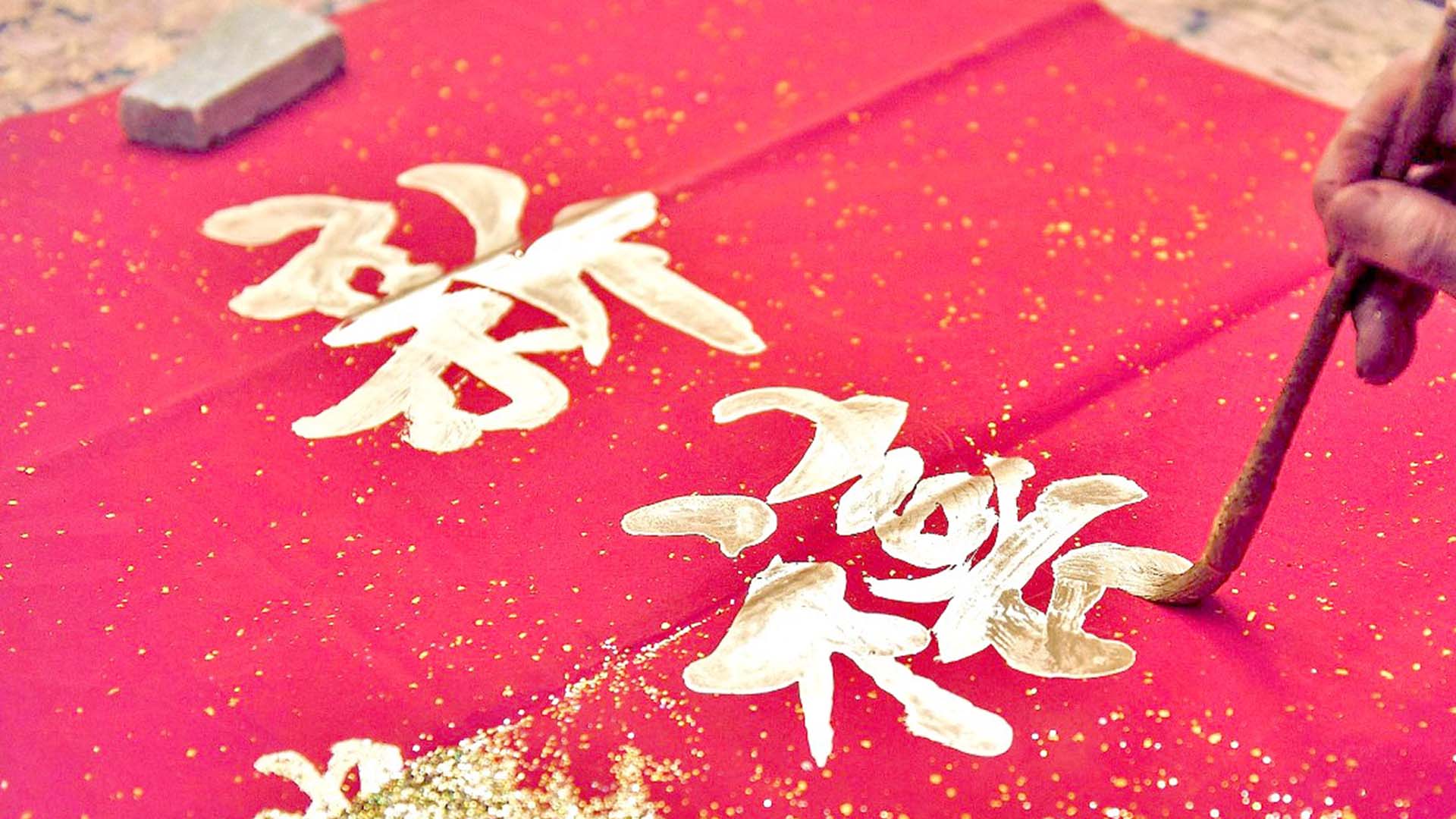
Soak up the auspicious ambience of Chinese New Year as red and gold abound! As the most important festival in Hong Kong, Chinese New Year is celebrated with plentiful symbolic festivities taking place to usher in good fortune and prosperity. To make sure you start the year off right, here’s a checklist of experiences you won’t want to miss, which encompass the city’s celebrations before, during and after Chinese New Year.
Days preceding the New Year: boost your luck and popularity at flower markets
Shopping at flower markets is a cherished tradition for locals in the lead-up to Chinese New Year. Typically lasting a week and ending at midnight on the day of Chinese New Year, these celebrations showcase a colourful display of auspicious floral charms such as gladiolus, peach blossoms, peonies and orchids, among others. While flower markets pop up across Hong Kong’s neighbourhoods, the one at Victoria Park in Causeway Bay holds a special allure as the largest and liveliest of them all, making it an absolute must-visit during your stay.
Tip:
Prepare for your visit by reading up on what the New Year flowers and lucky plants symbolise. Gladiolus and narcissus, for example, are symbols of strength and purity, while peonies and silver willows are believed to bring wealth and luck.
To boost your romantic relationships, it is believed that circling a peach blossom tree three times clockwise will crank up your charm for the year ahead. If petals end up on you, even better — an ideal spouse is headed your way. Already have a partner? Circle the peach blossom tree once to make your love stronger!
Chinese New Year’s Eve: offer the first incense stick at the Wong Tai Sin Temple
An age-old Chinese New Year ritual in Hong Kong, the first incense offering holds the promise of receiving extraordinary blessings for those fortunate enough to be the first to enter the temple. The event at the Wong Tai Sin Temple is the most sought after, and some worshippers would even dress up for the occasion.
Tip:
Fill up on auspicious eats before heading to the temple! If you’re hoping for a better job, good grades or a growth spurt, nin gou (Chinese New Year pudding or glutinous rice cake), which literally means ‘higher by year’, is what you should feast on. For savoury and crispy treats, try deep-fried sesame balls, which signify a home full of wealth, and deep-fried dumplings whose shape resembles a Chinese gold ingot.
First day of Chinese New Year: watch the Chinese New Year Night Parade
An awe-inspiring spectacle much-loved by both locals and visitors, the Chinese New Year Night Parade in Tsim Sha Tsui is a highlight of the festive season in Hong Kong. The glittering procession features fantastic floats and spectacular performances spreading abundant luck and joy.
Tip:
While many small businesses may not be open from the first to third day of Chinese New Year and even until the fifth day according to traditions, you’ll find no lack of dining and shopping options during the festive period. Malls and restaurants in shopping districts remain open year-round, so there’s no need to worry at all!
Second day of Chinese New Year: spin the fortune pinwheel at the Che Kung Festival
Che Kung Festival is another highlight of the new year’s temple visits. Celebrated on the second day of Chinese New Year, it commemorates the birthday of Che Kung, a revered military commander from the Southern Song dynasty (1127–1279), where flocks of worshippers pay their respects and offer incense sticks at Che Kung Temple. Legend has it that the temple was originally built by villagers living in the Sha Tin area during an epidemic outbreak in the late Ming dynasty, in hopes of invoking the commander’s supreme power to supress plagues. When you explore the temple today, you’ll encounter an imposing statue of Che Kung in the main hall, alongside an iconic fortune-changing fan-bladed wheel. Turning the wheel clockwise is believed to attract good luck and bring a smooth-sailing year ahead, or take home a pinwheel to bring the blessings along with you!
Tip:
Most people prefer to visit the temple on the third day as it’s traditionally believed to be a day when one would easily misspeak or offend others. Visiting on the second day allows you to enjoy the festivities with fewer crowds.
Third day of Chinese New Year: test your luck on Raceday
As one of the biggest days on the racing calendar, the Sha Tin Racecourse is highly anticipated by die-hard racing fans or the casual spectator alike, and deserves a spot on your bucket list for added excitement. While joining the cheering crowds to witness exhilarating races on the track, don’t forget to explore the myriad of festivities and live entertainment performances intended to bring luck and fortune for the new year.
Tip:
It’s passed down in common local folklore that wearing red enhances one’s luck. Also, if you’re on a winning streak, be sure not to wash your hands to keep the good fortune intact.
Throughout Chinese New Year: make a wish at the Wishing Trees in Lam Tsuen
The Wishing Trees in the tiny village of Lam Tsuen attract hundreds of people to wish for good health, happiness, and prosperity during its busiest time of year. Visitors write their wishes on a piece of joss paper, attach weights such as mandarins, and toss them up to the tree. If it clings to the branches, it is believed the wishes will come true. To preserve the century-old tree and meet the high demand, artificial trees or Chinese-style wooden racks have been installed for the wish-making practice.
Tip:
It’s said that the higher the joss paper gets caught in the trees or racks, the higher the chance that your wishes will be fulfilled.
Fifteenth day: celebrate the Lantern Festival with your loved ones
The Lantern Festival, also known as the Chinese Valentine’s Day, falls on the final day of Chinese New Year celebration. Glutinous rice balls, which represent unity and togetherness, are eaten. Against the backdrop of the first full moon of the year, it’s customary to watch the enchanting lanterns illuminate the night sky, while riddle games spark laughter and connection among loved ones, closing the days-long celebrations on a spirited note.
Tip:
There’s a saying that the most ideal day to open lai see (red packets) is on the seventh day of Chinese New Year, also known as ‘everyone’s birthday’. But some say it’s best to wait until the 15th day as it means accumulating wealth for the rest of the year.



